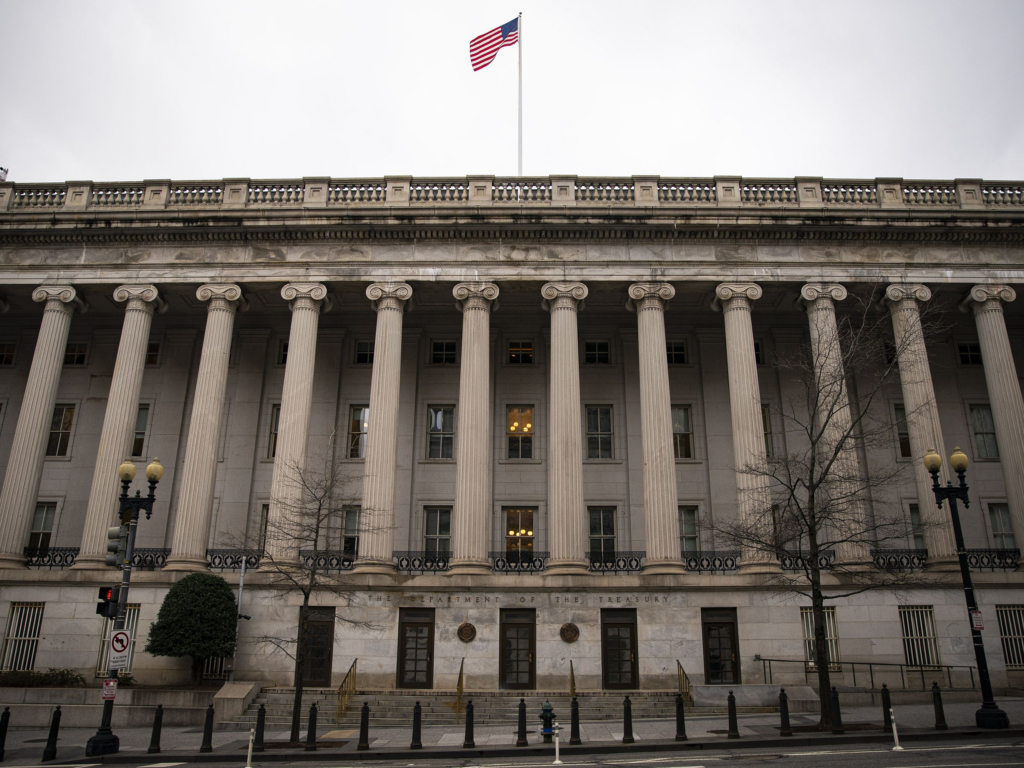Moody’s Analytics said on May 10 that New Mexico might lose 37,500 jobs if the federal government fails for a lengthy time.
This paper describes two probable outcomes: the U.S. defaults and then recovers, and a prolonged default.
The research says a breach has a 10% chance. “If a breach occurs, it will likely be brief. Even a long standoff is now possible. What was inconceivable is now a threat.”
According to the article, the default deadline is June 8, but economics can amend it.
Tax income is down 40% from the previous year.
The study blames the unanticipated shortfall in April tax collection on the deferral of the tax reporting deadline to October 16 for disaster-area taxpayers in California, Alabama, and Georgia and fewer capital gains tax revenues.
“It is also important to note that the X-date maybe June 8 as we forecast, but a few days later the Treasury will benefit from a mid-June surge of quarterly payments of non-withheld taxes owed by higher-income taxpayers. Thus, the Treasury could pay government payments on schedule for the rest of June. This may diminish politicians’ immediate urgency to act, depending on financial markets.

Long-term default might hurt New Mexico.
With two national laboratories, three Air Force bases, five National Forests, 18 National Park sites, two designated National Parks, and the U.S. Army-run White Sands Missile Range, New Mexico has more federal personnel than most states.
Besides federal installations and jobs in New Mexico, a hack might affect state income.
“On average, one-third of state revenue comes directly from federal grants to help pay for public services like health care, education, and infrastructure,” Pew Charitable Trust fiscal federalism project manager Rebecca Theiss stated.
“Federal spending also helps states’ economies and tax revenues through military contracts, employee wages, and payments to individuals, including food stamps and social security benefits.”
A short-term default, even for a few days, might cost New Mexico 5,000 jobs, according to the analysis.
Short-term default would increase unemployment to 5.2 percent from 3.5 percent. A prolonged default would raise unemployment to 7.7%.
Two scenarios, one economy, and a recent similar incident
Despite efforts by the highest-ranking U.S. government officials, the debt ceiling situation continues.
The government might default for a week or longer.
The research predicts “a TARP moment” and a stock market plunge.
“This hearkens to the dark day in autumn 2008 when Congress initially failed to pass the Troubled Asset Relief Program bailout of the banking system, and the stock market and other financial markets cratered,” the paper adds.
“It’s hard to imagine lawmakers letting things get this far, but the TARP experience shows it’s possible. Still, if that terrifying experience is any indication, Congress would immediately change direction and settle the debt limit standoff to allow the Treasury to issue debt and pay its bills.”

If the U.S. credit rating drops like it did in 2011, the consequences might be dire.
The paper indicates that a downgrade of Treasury debt would trigger credit implications and downgrades on the debt of many additional financial institutions, nonfinancial firms, municipalities, infrastructure providers, structured finance transactions, and other debt issuers.
“Fannie Mae, Freddie Mac, and the Federal Home Loan Banks, which are clearly backed by the U.S. government, would suffer the biggest rating changes. Other institutions’ ratings would rely on their ties with the U.S. government and countervailing financial strengths.”
The research argues that even if the default were undone within a week, the cascade of issues to downgrade would undermine the country’s frail economic structure.
“Despite lawmakers’ quick reversal in this scenario and our assumption that the rating agencies do not engage in downgrades, considerable damage will have already been done,” the paper adds. Even without a debt ceiling violation, CEOs and economists expect a recession.
Goldman Sachs predicted a 25–65% recession in 2023.
“With the Federal Reserve ramping up interest rates to quell wage and price pressures, avoiding a recession would be difficult even if nothing else went wrong,” the Moody’s study adds.
According to Moody’s, an uncorrected default would be devastating.
“We assume in these circumstances that the credit rating agencies would downgrade Treasury debt, precipitating widespread financial system downgrades,” the paper adds. Since Treasury income cannot exceed outlays, the federal government would have to cut spending.
If a June 8 debt ceiling breach continued into July, the Treasury would have to cut government expenditure to erase a $150 billion cumulative cash imbalance. These cuts would devastate growth. Consumer, corporate, and investor confidence loss would worsen the economy.”

The debt ceiling dispute is making financial professionals and everyday Americans nervous about the nation’s economic destiny.
The 2011 and 2013 debt limit crises caused consumer sentiment to drop, the survey said.
“The brinkmanship is also unnerving for businesses that will curtail investment and hiring, and for financial institutions that will quickly turn more cautious in extending credit to households and businesses,” the paper reads.
Moody’s expects a prolonged economic slump will affect the stock market, unemployment, and other economic issues similarly to the Great Recession.
After meeting Tuesday afternoon, the White House and congressional leadership intend to meet Friday before the deadline.
White House and congressional aides will meet daily to develop a strategy before the Friday meeting.

